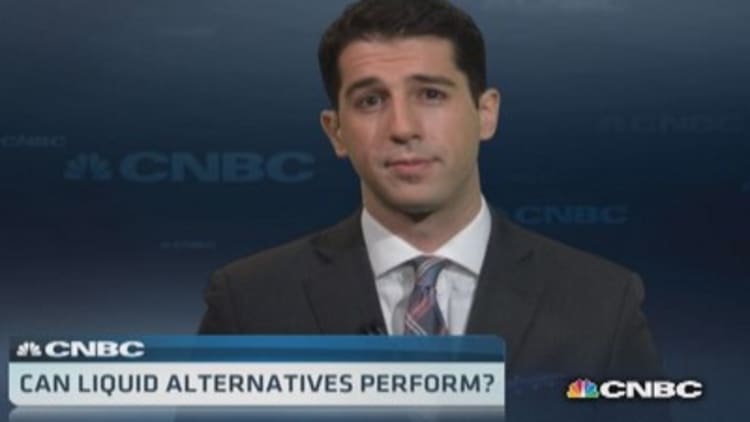
If you're worth millions or billions of dollars, you hire smart people to help invest your assets—unless you're a neophyte trusting it all to your third cousin creating the next bitcoin. So what advice are those elite advisors giving their wealthy clients?
CNBC.com recently interviewed Greg Curtis, the chairman of wealth advisory firm Greycourt, about just that. Founded in 1988 by Curtis, the Pittsburgh-based group serves wealthy families and select institutions in the U.S. and internationally representing total assets of approximately $10 billion. Those clients have investable assets ranging from $25 million to more than $1 billion.
CNBC: What's your outlook on the markets for 2014?
Curtis: I think the markets in 2014 will be much more interesting from the perspective of a professional investor. In 2013 every stock went straight up, with very little differentiation between good companies and bad companies, or between sound economies and unsound ones. As Fed stimulus eases off and interesting geopolitical events play out—such as China continuing to slow, major changes in the Middle East regarding Iran and Egypt, continued improvement in economic growth globally—differentiation among stocks will increase. Simply buying index funds will no longer be a useful strategy.
Any particular sectors you're telling clients to get in?
Most of the sectors we like these days are best accessed via hedge and private equity-like strategies, which makes them difficult for non-accredited investors. I am thinking of distressed assets in Europe, real estate lending, long/short strategies in Japan. We are also looking at closed-end bond funds, although most of the the discounts aren't yet compelling.
(Read more: 'No bubble troubles' in stocks, Goldman says)
What's overvalued? What are you avoiding?
US small-cap is extremely overvalued and we are significantly under our target allocations to that sector. Long real estate (real estate investment trusts, real estate operating companies) isn't interesting, nor are most government bonds. In the hedge sector we are reducing our exposure to credit strategies. In private equity, we are avoiding the very large buyout funds, as we have been doing for some years.
What's a model portfolio breakdown by asset class, including cash? What about hedging?
The key here is to get the core fixed income allocation right. Bonds drag down long-term returns and therefore need to be minimized. On the other hand, they are essential for meeting spending needs, controlling portfolio volatility, and in general making clients comfortable. Once a client is comfortable, we can do much more interesting things with the risk portion of the portfolio.
For a typical client we try to cover three-to-five years of spending with the core bond portfolio, although this can go higher for very conservative investors. So if a family is spending 3 percent to 4 percent of their capital every year, bonds would represent somewhere between 10 percent and 20 percent of the overall portfolio. Let's call it 15 percent for the purpose of this exercise.
The portfolio would therefore look something like this: Core bonds, 15 percent; other fixed income like high yield, 5 percent; U.S. large cap, 15 percent; US small cap, 5 percent; EAFE [Europe, Australasia and the Far East], 10 percent; emerging and frontier markets, 10 percent; hedge, 15 percent; real estate, 10 percent; and buyouts and venture, 15 percent.
Note that some portion of the long exposures will likely be implemented via long/short hedge funds and/or passive, tax-aware managers.
What do you think of emerging and frontier markets?
This is a tough one. On the one hand, valuations in emerging markets are very low by historical measures, suggesting that emerging is an interesting opportunity. On the other hand, there are many headwinds facing most of the emerging economies: Fed tapering, China's slowing economy and transition away from heavy industry, top-down mismanagement of economies by governments. Our approach is to maintain a roughly cap-weighted exposure to emerging, but to implement that exposure conservatively, using structured products and long/short managers.
I would also point out that the entire concept of "emerging markets" makes less and less sense. Emerging countries' economies are driven by very different factors, and even within countries sectors matter a lot.
Frontier markets will be the next big thing in foreign investing, but they remain treacherous and should represent only a small portion of most family portfolios for now.
(Read more: Goldman bear call on emerging markets draws fire)
Do you buy the hype of liquid alternatives (items in portfolios that need to be held longer to realize value)?
"Hype" is the right word. I certainly understand the attraction from a client's point of view: lower fees and great liquidity. But lower fees and daily liquidity are fundamentally incompatible with the core reasons for investing in hedge: Managers are more skilled and much harder-working, and almost all interesting hedge fund strategies are, at least to some extent, illiquid. Maybe someday someone will solve these problems, but so far—and we've looked at dozens of liquid alts—it's just an ugly investment in a pretty package.
(Read more: Family makes a $100M bet on low hedge fund fees)
What can retail investors learn from your wealthy clients?
There are two main differences between wealthy investors and middle income investors. The first is that wealthy investors have access to more interesting products because they are accredited investors. This is a regulatory issue and, in my view, should either be abolished or significantly reformed.
The second is that wealthy investors don't start with return, they start with risk. Once they are comfortable with the risk profile of their capital, their advisors can build interesting portfolios that don't depart from the risk budget. Retail investors tend to think first about return and only later—when it's too late—about the risks they are taking.
—By CNBC's Lawrence Delevingne. Follow him on Twitter @ldelevingne.






